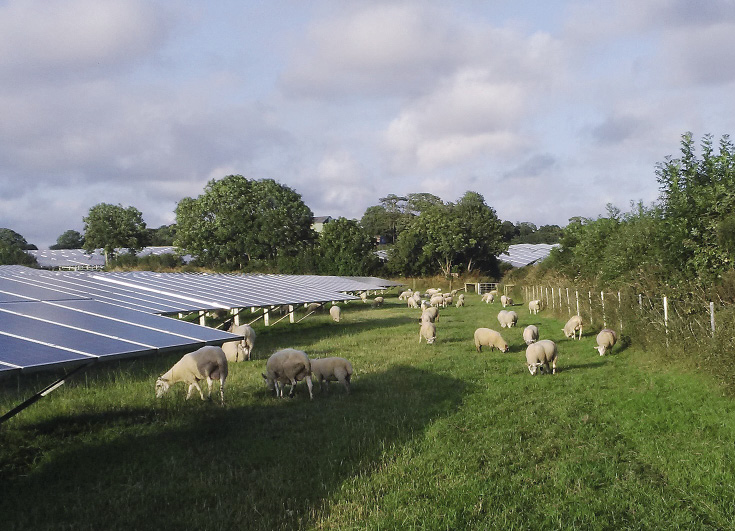Solar Sheep Smaring helps to create a useful environment for double use, according to American Solar Gazing Association in a two -year study carried out at 31 different sun places.
Solar -Begrazing makes healthier soil on northeastern solar projects, research of the American Solar Grazing Association (Asga) found.
The two -year study started in 2022 and was intended to investigate the consequences of solar plots in the health of the soil, feed crops and grazing conditions. The research included 28 grazed and three non-engraved commercial solar projects in the Northeastern United States, the majority of which were previously arable land.
As sheep graze, they trample manure, urine, seeds and plant material in the earth, Lightsource BP said. “The vegetable matter dissects, and together with the animal waste it fertilizes and rejuvenates the soil. Character land grows healthier vegetation for the sheep to eat, and the cycle continues.”
To measure these effects, ASGA data about soil cabbage, soil compaction, the variety of species, plant food and other environmental factors both before and after the grazing seasons 2022 and 2023.
Three important findings:
- Solar -Begrazing supports healthier soil.
- Solar makes healthier food for sheep.
- The grazing of solar energy can improve grass quality over time.
According to Lightsource BP, one of the participants of the solar project that participated, the study was the first to US Department of Agriculture Pasture Condition Scorecardwho assigns a high “pasture condition score” to fields that are quality places to increase cattle.
Graased places with solar energy usually had a higher soil organic substance than non-hersitoplates, with values of 4.14% and 3.70% respectively. The pH of the soil was significantly higher in grazed places, with an average of 6.20 compared to 5.81 on non-grinding places, the researchers said that the potential for solar grazing demonstrates to improve the soil health of the solar site.
The researchers also discovered that crop protein was consistently considerably higher under the solar panels for all seasons and years, while better digestibility was seen in areas under the solar panels in the fall of 2023.
Although not statistically significant, the researchers noted that the scores of the pasture increased between 2022 and 2023, “which suggests that the budget of sheep can improve over time.”
(See also: The economy of grazing solar energy))
One of the solar projects studied was the Nittany 1 project of Lightsource BP in Pennsylvania, where sheep graze over the three locations of the project. Lightsource BP sowed the sites with a mix that was specifically formulated by ASGA, in collaboration with Ernst Conservation Seeds and Polinator Service. The seed mix, “Fuzz and Buzz”, is designed to support sheep and pollinators on solar sites, said Lightsource BP.
The findings are promising for the area of Agrivoltaics, The practice of co-locks of solar facilities and agricultural production. The solar facilities are usually designed with raised profiles, so that tractors and animals can pass among them, or by placing holes between rows to enable co-led agricultural and solar production.
The research was funded by the New York State Energy Research and Development Authority (Nyserda), while the American Farmland Trust led the technical aspects of the research design.
“Scientists and soil health specialists from AFT contributed to the initial research design and data analysis methods to ensure PV Magazine USA. “As an agro -ecologist with a doctorate in soil science, I am dedicated to investigating our understanding of agro -ecosystemnamics.” She noted that the provisional analysis conference procedure and the coming article are both peer reviewed and said that American Farmland is trust “Invested in this type of research to better understand the potential benefits and considerations for farmers. “
“This research is exciting because there is not much research that Agrivoltaïschen evaluates,” said White. Our study has shown that there are some advantages for an eternal feed -like quality of solar panels. The increase in the raw protein content is consistent with other research into the effects of shade on multi -year feed crops, especially in the cooling season grasses that occur in the northeast. There may be some decrease in the total yield of dry matter in this system and we are hopeful future research will investigate. “
She added: “Our study also showed that the introduction of grazing in solar panel systems improves some soil health parameters, such as organic carbon content, but can have a negative influence on other aspects of the soil health, such as aggregated stability.”
This content is protected by copyright and may not be reused. If you want to work with us and reuse part of our content, please contact: editors@pv-magazine.com.

